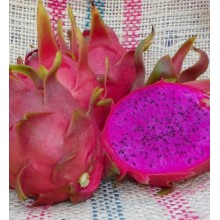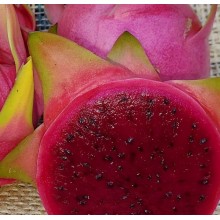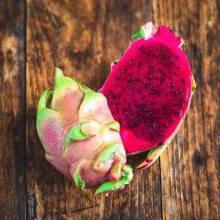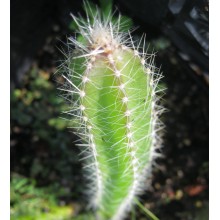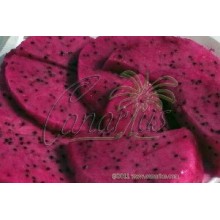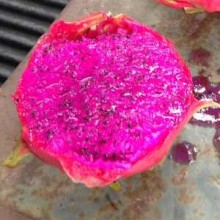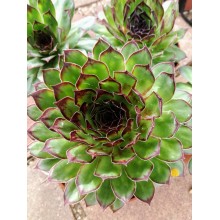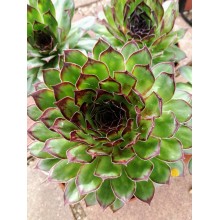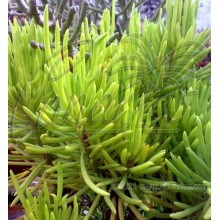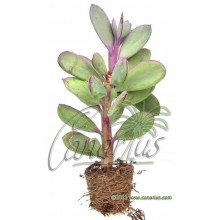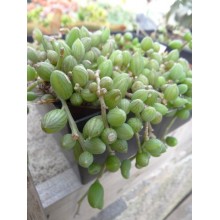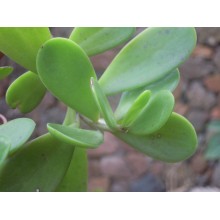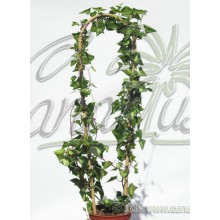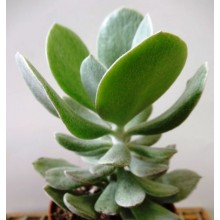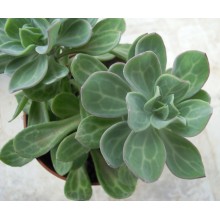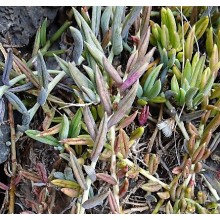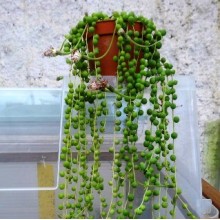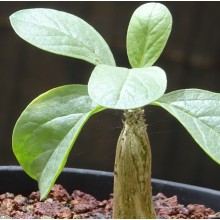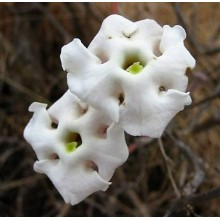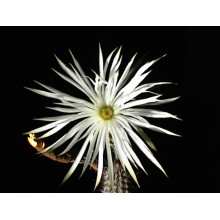Suculentas Hay 628 productos.

Los desiertos y las áreas secas son el hogar de las plantas más interesantes. Canarius ofrece una selección creciente de plantas suculentas de la máxima calidad, ya que han sido cultivadas al aire libre, bajo el pleno sol de las Islas Canarias.
Las suculentas o "plantas crasas" son especies que retienen agua, que están adaptadas a las condiciones de sequía. Estas plantas almacenan succum (jugo, agua) en sus hojas, tallos o raíces, y con frecuencia muestran un aspecto grueso y carnoso.
Subcategorías
-
Agave
Agave es un género de plantas suculentas de América. Algunas especies crecen en zonas frías y aguantan heladas, mientras que otras viven en climas tropicales. Algunas son diminutas y otras son gigantes, de hasta 2 o 3 m de ancho.
Los Agaves resistentes la frío pueden crear un efecto exótico en tu jardín. Las especies de Agave son buen acompañamiento para palmeras o cactus. Los Agaves variegados son muy buscados por los coleccionistas. Nuestra tienda online ofrece una selección siempre cambiante de especies. Enviamos plantas con raíces desnudas, a menos que se especifique lo contrario. -
Aloe, Gasteria y Haworthia
Aloe, Gasteria y Haworthia son tres géneros relacionados, que comprenden cientos de plantas suculentas. Todas ellas son fáciles de cultivar en macetas. Algunas se adaptan a los niveles de poca luz de las condiciones de interior y se pueden cultivar como plantas domésticas.
- Aloe es un género de unas 400 especies, nativas de África, Arabia y Madagascar. Los Aloes pequeños o enanos se están haciendo muy populares en climas más fríos, ya que se pueden poner en el interior durante los meses más duros.
- Gasteria incluye unas 80 especies endémicas de Sudáfrica, conocidas por sus hojas espectaculares que son brillantes, moteadas y con texturas. Florecen en primavera-verano con largas espigas de flores pequeñas de color naranja. Algunas especies son tan variables que ofrecemos clones particulares de lugares específicos.
- Haworthia es un género endémico de Sudáfrica con alrededor de 70 especies y varias subespecies, variedades y formas locales. Las hojas a menudo están marcadas, manchadas, punteadas, o son semi-translúcidas y muestran amplias variaciones.
-
Crasuláceas
Esta es una sección nueva y creciente de especies de la familia Crassulaceae. Hay alrededor de 1.400 especies en 33 géneros y su distribución es mundial, pero sobre todo se crecen en el hemisferio norte y el sur de África, especialmente en hábitats secos. Aquí usted puede comprar plantas sanas, resistentes al sol, cultivadas en las Islas Canarias y enviadas a su casa.
-
Mesembs
Este grupo de plantas del desierto se denominan brevemente Mesembs porque pertenecen a una familia botánica anteriormente llamada Mesembryanthemaceae. Hay casi 2.000 especies, que se encuentran principalmente en el sur de África, con adaptaciones extremas a hábitats secos. Algunas son llamadas "piedras vivas", ya que son similares a guijarros. Muchas son fáciles de cultivar y su principal necesidad es luz solar directa. Algunas son difíciles porque crecen en áreas realmente extremas.
Nuestra tienda online ofrece plantas saludables que han crecido al sol, con hojas compactas y coloridas. Algunas plantas se venden como esquejes, y otras como plantas enraizadas, de al menos dos años de edad.
-
Sansevieria
Recientemente asignado a la familia Asparagaceae, el género Sansevieria cuenta con cerca de 70 especies, casi todas nativas de África, Arabia y Madagascar. Son hierbas perennes adaptadas a hábitats secos y severos, con hojas suculentas, sus rangos de longitud van desde unos pocos centímetros hasta 2 metros. La Sansevieria trifasciata y sus muchas varideades se encuentran entre las plantas de interior más apreciadas, son conocidas popularmente como "lengua de suegra". Una planta adulta por lo general produce una espiga con muchas flores blancas ricamente perfumadas y a continuación bayas anaranjadas. Incluso las más raras especies son resistentes a la dejadez, a condición de estén a salvo de las heladas en invierno y el sol abrasador en verano.
-
Hoya
Las hoyas son trepadoras, con flores a menudo vistosas y exóticas, provenientes de las selvas tropicales de Asia y Oceanía. La mayoría de las especies necesitan luz media, pero también pueden crecer como plantas de interior. Son muy adecuadas para enrejados y cestas colgantes. Toleran un par de semanas de sequía, pero son sensibles a las heladas y al frío. Muchas hoyas son fáciles de cuidar y hacer florecer, mientras que algunas son más difíciles y poco frecuentes.
-
Asclepias
Las Asclepias son una subfamilia Apocynaceae con cerca de 2.900 especies. Se trata de hierbas, sufrútices, o raramente arbustos, partes leñosas con o sin corcho, raíces fibrosas… Las Asclepias producen flores bastante llamativas debido a los complejos mecanismo que han desarrollado para su polinización. Muchas de estas especies producen una fragancia inusual, a menudo denominada “carroña”, atrayendo a las moscas para dicha polinización. -
Caudiciformes
Estas plantas de zonas áridas producen un tallo inusualmente grueso: el cáudice. También se les llama Paquicaule y tienen un tronco desproporcionadamente grueso; a menudo, con pocas ramas. El cáudice se puede esconder bajo tierra, pero en la mayoría de los casos sobresale, formando árboles espectaculares. Los caudiciformes más grandes del mundo son los baobabs. -
Otras suculentas
Aquí encontrará todas las especies de plantas del desierto que no están incluidas en su propia categoría. Pondremos aquí todas las plantas de familias inusuales, excepto Agaves, Aloes, Crassulaceae, Sansevieria, mesembs, Epiphytic cacti, etc.
-
Selenicereus 'Sin Espinas'
Selenicereus 'Sin Espinas'
This thornless variety comes from the genus Hylocereus and an unknown species native to Nicaragua. The fruits average size is a pound with thick pink skin with green fins and it has deep red flesh. The most interesting aspect of this variety is its lack of spins.Rooted cutting of 20-25 cm.
21,70 € -
Selenicereus costaricensis - Costa Rican Dragon Fruit
Selenicereus costaricensis - Costa Rican Dragon Fruit
Wild dragonfruit with red, sweet and tasty fruits. It grows wild in central america in dry forests. This is the ancestor of many modern hybrids and to many conoisseurs it is still the tastiest, and the "real thing". Its fruits are all-red, especially rich in healthy indicaxanthin anti-oxidants.
28,50 € -
Selenicereus purpusii - Pitahaya, Purple Dragon Fruit
Selenicereus purpusii - Pitahaya, Purple Dragon Fruit
20-25 cm Rooted cutting. A climbing cactus with excellent fruits, with purple skin and flesh. It is a very good pollinator for the other ones. It needs a pollinator, and the best is H. undatus. VISIT OUR SECTION OF FRUIT TREES A-Z AND FIND MANY MORE HYLOCEREUS
21,70 € -
Selenicereus undatus 'Condor'
Selenicereus undatus 'Condor'
"Self-pollinating" cultivar with large oval shaped fruit up to 700g in weight, with a skin which is at first light green with pinkish shades which darken to pinkish red as the fruit ripens. The flesh is dark purple colour with many small dark edible seeds. The taste of this variety is described as very peculiar and pleasant to the palate.
21,70 € -
Sempervivum calcareus
Sempervivum calcareus
Native to Southern Eruope from about 200 to 2800 m, it has neat stolinferous rosettes with a red hue, and ciliate ("Hairy") leaf margins. It naturally grows in rocky outcrops and cliffs, but it became well known in ancient times since it was typically found on roofs, hence the name "tectorum", meaning "of the roofs"
10,70 € -
Sempervivum tectorum
Sempervivum tectorum
Native to Southern Eruope from about 200 to 2800 m, it has neat stolinferous rosettes with a red hue, and ciliate ("Hairy") leaf margins. It naturally grows in rocky outcrops and cliffs, but it became well known in ancient times since it was typically found on roofs, hence the name "tectorum", meaning "of the roofs"
10,70 € -
Senecio barbertonicus
Senecio barbertonicus
Small shrub, Bright green succulent leaves held upright and are crowded toward tips. Orange yellow clusters of flowers appear in late autumn. It is probably the largest species in the group of senecios with cylindrical leaves...
10,80 € -
Senecio crassissimus
Senecio crassissimus
Cont.= 8,5 cm - This species from Madagascar grows as a low shrub. Multiple stems have flattened obovate leaves, glaucous gray with purple margin in strong light. Yellow flowers. Suitable for pots or frost-free gardens.
10,70 € -
Senecio jacobsenii
Senecio jacobsenii
Creeping Senecio from E Africa with glossy leaves. It can be used in baskets or as a ground cover. It is called in English Trailing Jade Plant.
10,40 € -
Senecio macroglossus variegata
Senecio macroglossus variegata
NEW! - Cont.= 8,5 cm - This climbing plant is called Flowering Ivy, because its leaves and habit looks like an ivy but it bear daisy-like flowers. It is native to the Eastern coast of South Africa and it is frost sensitive.
10,80 € -
Senecio medley-woodii
Senecio medley-woodii
Branched succulent shrub up to 2 m tall, with white-felted stems and leaves. It bears solitary yellow "daisies" 15 mm in diameter in Winter.
10,20 € -
Senecio nyikensis
Senecio nyikensis
Low growing succulent with shrubby or scrambling stems. Leaves show an attractive pattern and the whole plant is very ornamental.
10,40 € -
Sesamothamnus rivae
Sesamothamnus rivae
Rooted cutting, at least 1 year old, with one ore more new growths.
23,20 € -
Setiechinopsis mirabilis
Setiechinopsis mirabilis
Fascinating cactus from Argentina with dark, almost-black stems, and showy night-blooming white flowers held on a long calyx. They only last one night but they are produced profusely throughout summer and they have a wonderful spicy scent.
13,50 €
En estos momentos tenemos pocos productos en esta categoría Suculentas

























